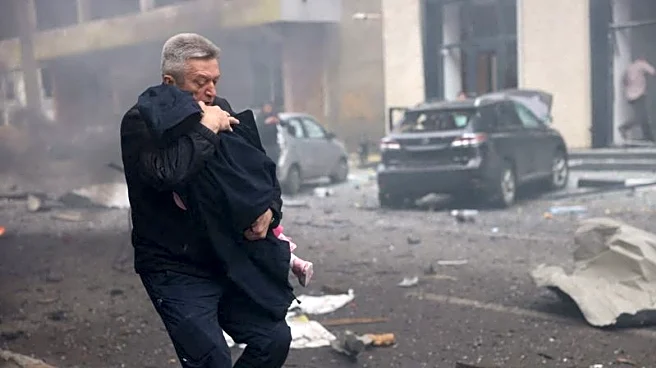What's Happening?
On October 22, 2025, Russia executed a large-scale drone and missile attack on Ukraine, resulting in significant civilian casualties and damage to infrastructure. The attack targeted residential areas
and critical infrastructure, including a kindergarten in Kharkiv, where one person was killed and several children were injured. The assault also led to power outages in Odesa and damaged an apartment building in Zaporizhzhia. In response, Ukraine launched a strike on a Russian chemical plant in Bryansk, which produces key components for Russian missiles. This plant has been sanctioned by the U.S. and U.K.
Why It's Important?
The attack underscores the ongoing conflict between Russia and Ukraine, highlighting the vulnerability of civilian areas and critical infrastructure in Ukraine. The international community, including the U.S. and European nations, may face increased pressure to respond to Russia's aggressive actions. The damage to energy infrastructure could exacerbate Ukraine's challenges as winter approaches, potentially leading to humanitarian issues. The strike on the Russian chemical plant indicates Ukraine's strategic efforts to disrupt Russian military capabilities.
What's Next?
Ukraine is likely to seek further international support to bolster its defense capabilities, including acquiring advanced air defense systems. The U.S. and NATO allies may consider additional sanctions or military aid to Ukraine. Diplomatic efforts to de-escalate the conflict could be pursued, although Russia's opposition to an immediate ceasefire complicates negotiations. The situation may lead to increased military engagements and further geopolitical tensions.
Beyond the Headlines
The attack raises ethical concerns about the targeting of civilian areas and the humanitarian impact on affected communities. Long-term implications include potential shifts in international alliances and increased military spending by nations involved in supporting Ukraine. The conflict may also influence global energy markets, given the damage to infrastructure and the strategic importance of energy resources in the region.













